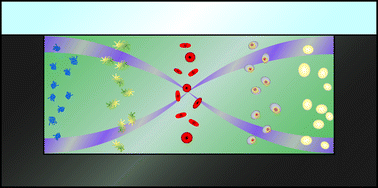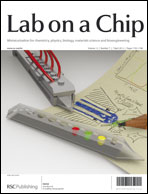Acoustofluidics 8: Applications of acoustophoresis in continuous flow microsystems
Abstract
This acoustofluidics tutorial focuses on continuous flow-based half wavelength resonator systems operated in the transversal mode, where the direction of the primary acoustic force acts in plane with the microchip. The transversal actuation mode facilitates integration with up- and downstream microchannel networks as well as visual control of the acoustic focusing experiment. Applications of particle enrichment in an acoustic half wavelength resonator are discussed as well as clarification of the carrier fluid from undesired particles. Binary separation of particle/vesicle/cell mixtures into two subpopulations is outlined based on the different polarities of the acoustic contrast factor. Furthermore, continuous flow separation of different particle/cell types is described where both Free Flow Acoustophoresis (FFA) and binary acoustophoresis are utilized. By capitalizing on the laminar flow regime, acoustophoresis has proven especially successful in performing bead/cell translations between different buffer systems. Likewise, the ability to controllably translate particulate matter across streamlines has opened a route to valving of cells/particles without any moving parts, where event triggered cell sorting is becoming an increasing area of activity. Recent developments now also enable measurements of fundamental cell properties such as density and compressibility by means of acoustophoresis. General aspects on working with live cells in acoustophoresis systems are discussed as well as available means to quantify the outcome of cell and particle separation experiments performed by acoustophoresis.

- This article is part of the themed collection: Acoustofluidics

 Please wait while we load your content...
Please wait while we load your content...